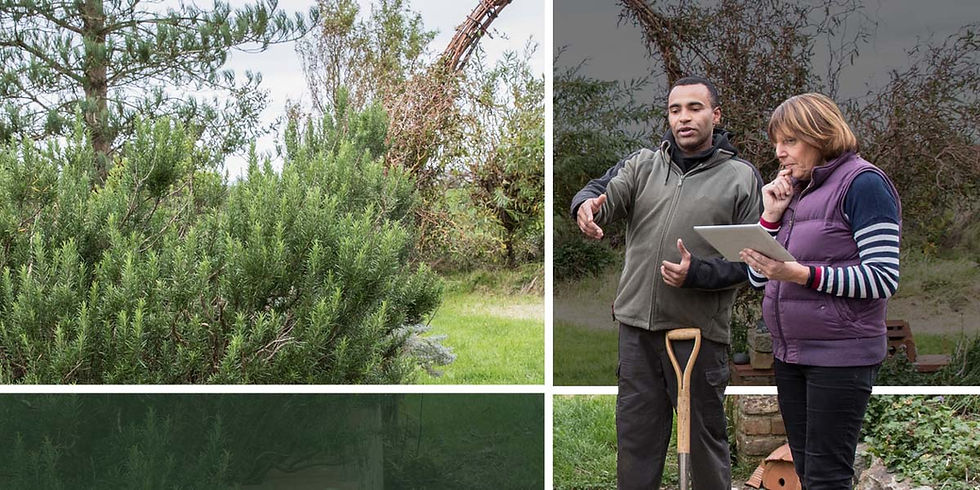Essential Tips for Growing an Indoor Herb Garden
- Rooted in Nature

- Nov 29, 2023
- 3 min read
Updated: Apr 3
Winter is here, your garden should be closing soon, and it's time to think about indoor gardening.

There's a certain magic in cultivating your own indoor herb garden, where the aromatic symphony of basil, rosemary, and mint can transform your culinary escapades. Whether you're an aspiring chef or a seasoned gardener, the joy of plucking fresh herbs from your windowsill is unparalleled. At Rooted in Nature, we believe that every home can be an oasis of greenery, and we're delighted to share these essential tips for successfully nurturing an indoor herb garden.
Choose the Right Location: Select a sunny spot for your herb garden, preferably near a south or southwest-facing window. Herbs thrive in natural sunlight, so ensure they receive at least 6-8 hours of sunlight daily. If natural light is limited, consider using artificial grow lights to supplement the necessary light requirements.
Select Suitable Herbs: Opt for herbs that are well-suited for indoor growing conditions. Some ideal choices include basil, parsley, chives, mint, thyme, and rosemary. These herbs are relatively low-maintenance and can flourish in the controlled environment of your home. Selecting a variety of herbs can add both flavor and visual diversity to your indoor garden.
Choose the Right Containers: Use well-draining containers with adequate drainage holes to prevent waterlogging and ensure proper air circulation for the roots. Opt for containers that are appropriately sized for the specific herbs you choose, allowing ample space for root growth. Consider using terracotta or clay pots, as they provide good breathability for the roots.
Use Quality Potting Mix: Invest in a high-quality potting mix that is specifically formulated for indoor herbs. These mixes provide adequate nutrients and promote healthy root development. Ensure the potting mix is well-draining to prevent water stagnation, which can lead to root rot and other fungal issues.
Water Wisely: Practice mindful watering by allowing the topsoil to dry out slightly between watering sessions. Overwatering can lead to root rot, while underwatering can cause the herbs to wilt and stunt their growth. Strike a balance by checking the moisture level regularly and adjusting the watering frequency accordingly.
Provide Adequate Ventilation: Ensure proper air circulation around your indoor herb garden to prevent the development of fungal diseases. Open windows periodically to allow fresh air to circulate, and consider using a small fan to simulate gentle outdoor breezes. Adequate ventilation not only promotes healthy growth but also discourages pests and diseases.
Fertilize as Needed: Supplement your herb garden with a balanced organic fertilizer to provide essential nutrients for robust growth. Choose a gentle, slow-release fertilizer and apply it according to the recommended dosage. Avoid over-fertilization, as it can lead to excessive foliage growth at the expense of essential oil production in the herbs.
Prune Regularly: Encourage bushy and compact growth by regularly pruning your herbs. Pinch off the tips of the stems to promote lateral growth and prevent legginess. Harvest the mature leaves frequently to stimulate new growth and ensure a continuous supply of fresh herbs for your culinary endeavors.
Embrace the delights of cultivating your own indoor herb garden and savor the flavors of your homegrown bounty. At Rooted in Nature, we believe that every household can relish the freshness and vibrancy of an indoor herb garden, transforming everyday meals into culinary adventures. Let the essence of nature permeate your living spaces and elevate your culinary creations to new heights.



Bình luận